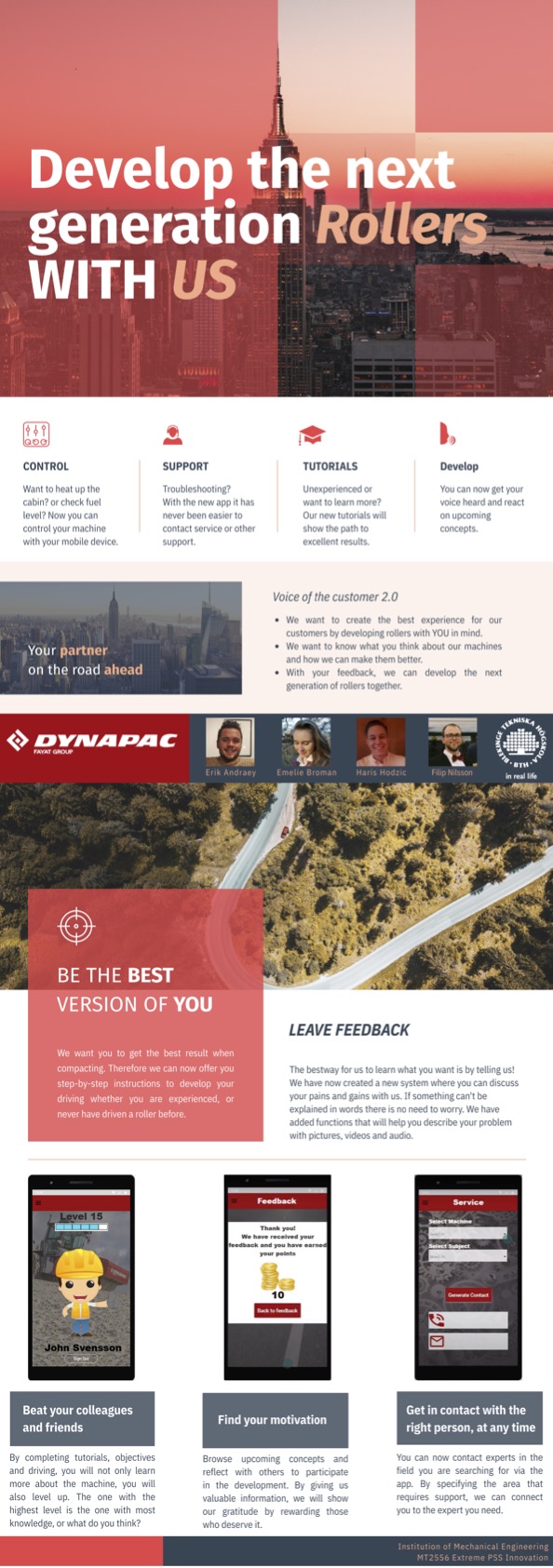
Voice of the Customer 2.0
- Post by: Tobias Larsson
- 17th January 2021
- No Comment
An innovative way to collect the voice of the customer

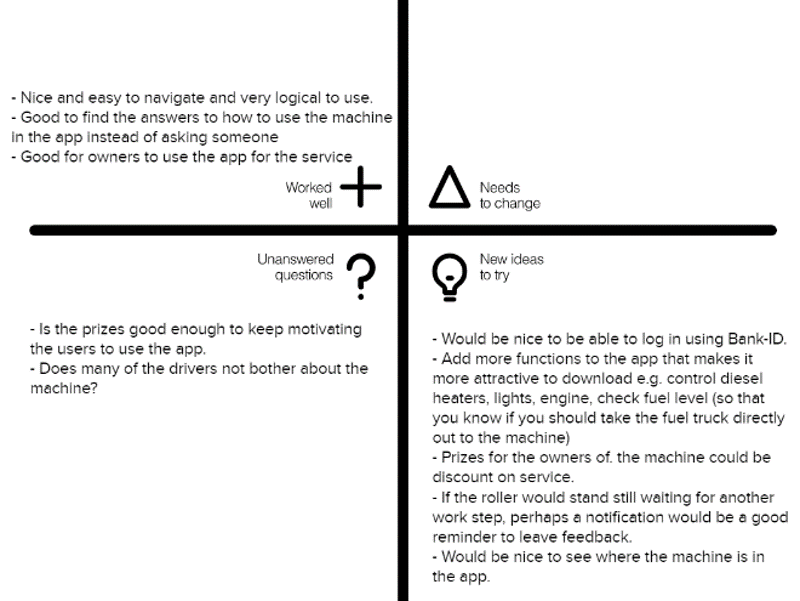
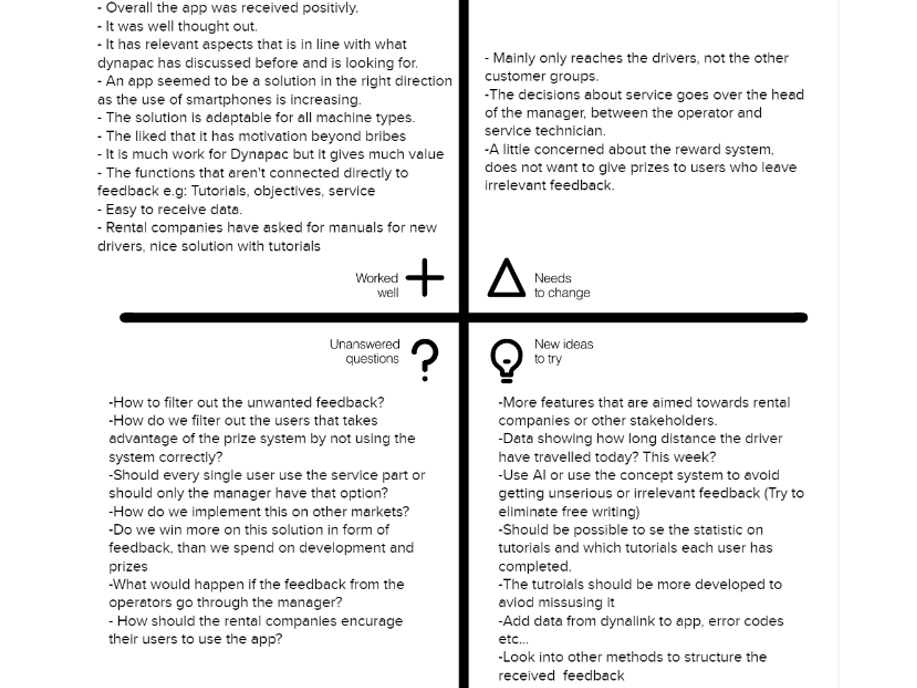
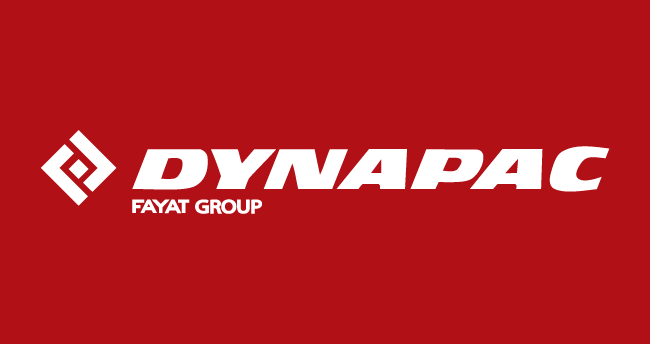
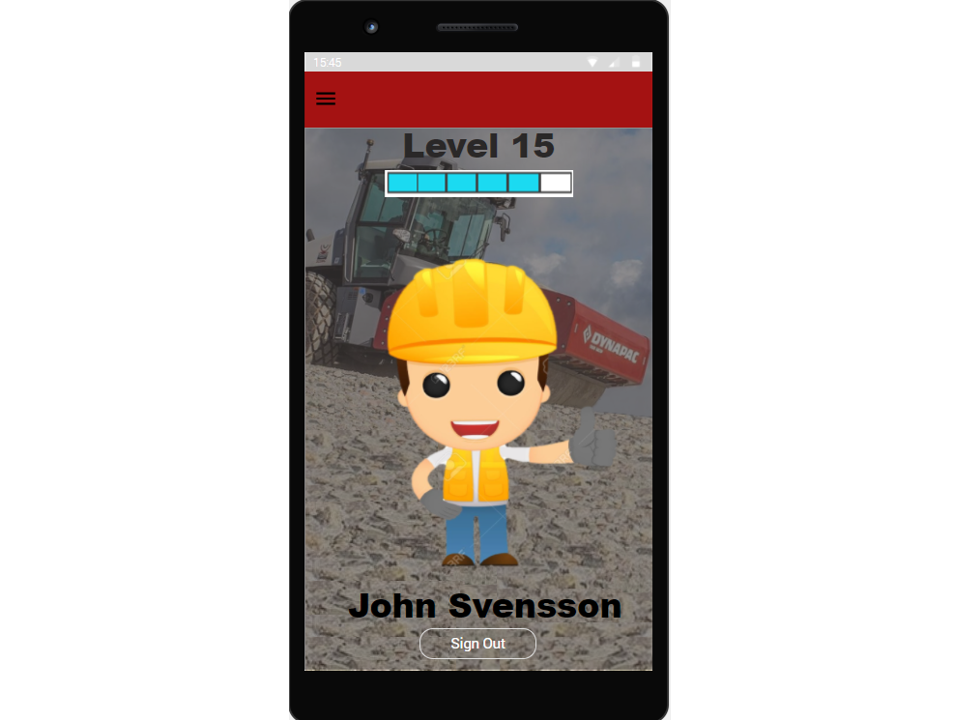

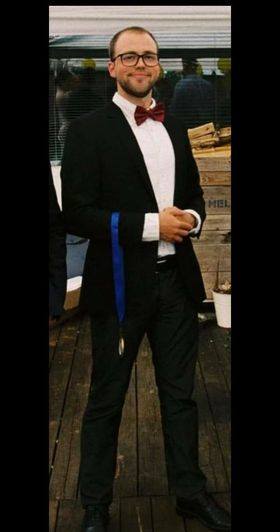











Programme: Mechanical Engineering, class of 2016
Course: MT2556 Extreme PSS Innovation
Corporate partner: Dynapac
Challenge: There is today a trend of not leaving feedback among customers. At the same time are companies pushing harder and harder on their customers to leave feedback, which presumably only adds to the trend even more. The challenge in this project was to work against this trend and find a new innovative way to gather feedback.
Solution: As our corporate partner needs to go through all feedback that is captured, there has been a focus on making the unstructured data that we seek, more structured and relevant. By focusing on a digital solution in app-format, it opens the possibility to structure the data digitally. Unfortunately, doesn't an app only focused on retrieving feedback counteract a trend, we needed something more. Therefore, the app grew exponentially to include other functions that would seem more attractive for the customers, to give them a reason to first download the app, and then continue using it. Therefore, is the app developed to support functions as heating up the cabin during the cold days, check fuel level from the coffee room so the driver knows if they should take the fuel truck out to the roller, tutorials for the drivers to get better results, gamification to create a fun competitiveness in the team, and much more. When it comes to the functions of leaving feedback, it is split into two parts. The first part is where you can leave general feedback by connecting it to different departments, machines and systems. The function is built to support the customers in leaving structured feedback to make it easier for our corporate partner. The other function is built on the idea of dating apps, where you swipe to like/dislike. But instead of people, you check out different concepts that are in development to give Dynapac the feedback they need during development. Whether a customer likes or dislikes a concept, they will always get the opportunity to specify why. By specifying why and also by leaving general feedback, they will earn points that can be spent in an online shop, which is a way for our corporate partner to show appreciation to their customers.
Impact: The method used today to gather the voice of the customer is based on two different tools. The first one is qualitative interviews where employees go out to visit the customers, build customer relationships, and learn more about their perspective. The tool is both time-consuming and costly for the amount of data that is gathered. The second tool is surveys, but when using surveys there is usually a low rate of response, and the results can be hard to interpret. With our solution will we open the possibility to ask specific questions to the customers and also gather feedback without needing to push the customers. With this idea will the need of using surveys completely disappear and the increased amount of feedback will minimize the need of conducting costly and time-consuming interviews. But the complete solution covers so much more than just the function of gathering feedback to make the day-to-day work experience better for the customers.
Prototypes: During the project has roughly 15-20 different prototypes been built that covers everything from paper paintings to sophisticated app prototypes in Justinmind and Thunkable. Through trial and error did we advance from the early prototypes to the last. What we ended up with in the project was a minimum viable product consisting of 3 different prototypes. One of them was created in Justinmind to create a visually appealing app from the customers perspective where we also could do some final testing to see what our test persons actually thought of the final idea. Another was created in Thunkable to learn more about app development and how the data is collected. This prototype was mostly constructed for our own learning and to see what possibilities we had in the project. The last prototype was created in Excel, perhaps this can seem like an odd place to create a prototype. But from the development conducted in the Thunkable prototype, we learnt that we could get it to communicate with an Excel sheet. From this learning we could then structure the data of feedback, to make it easier to access and to understand from our corporate partner's perspective.
Quotes from sponsor/partner:
- Sound like a completely thought through idea.
- Many of the functions that do not regard the voice of the customer are completely in line with the discussions we have had here at the company.
- The rental companies have requested instructions for their customers with low experience.
- How do we avoid rewarding those that leave irrelevant feedback just to earn more points in the game?
Project team:
- Erik Andraéy MSC in Mechanical Engineering, class of 2016
- Emelie Broman MSC in Mechanical Engineering, class of 2016
- Haris Hodzic MSC in Mechanical Engineering, class of 2015
- Filip Nilsson MSC in Mechanical Engineering, class of 2016
Documentation
- Project poster (PDF 7 MB
)
